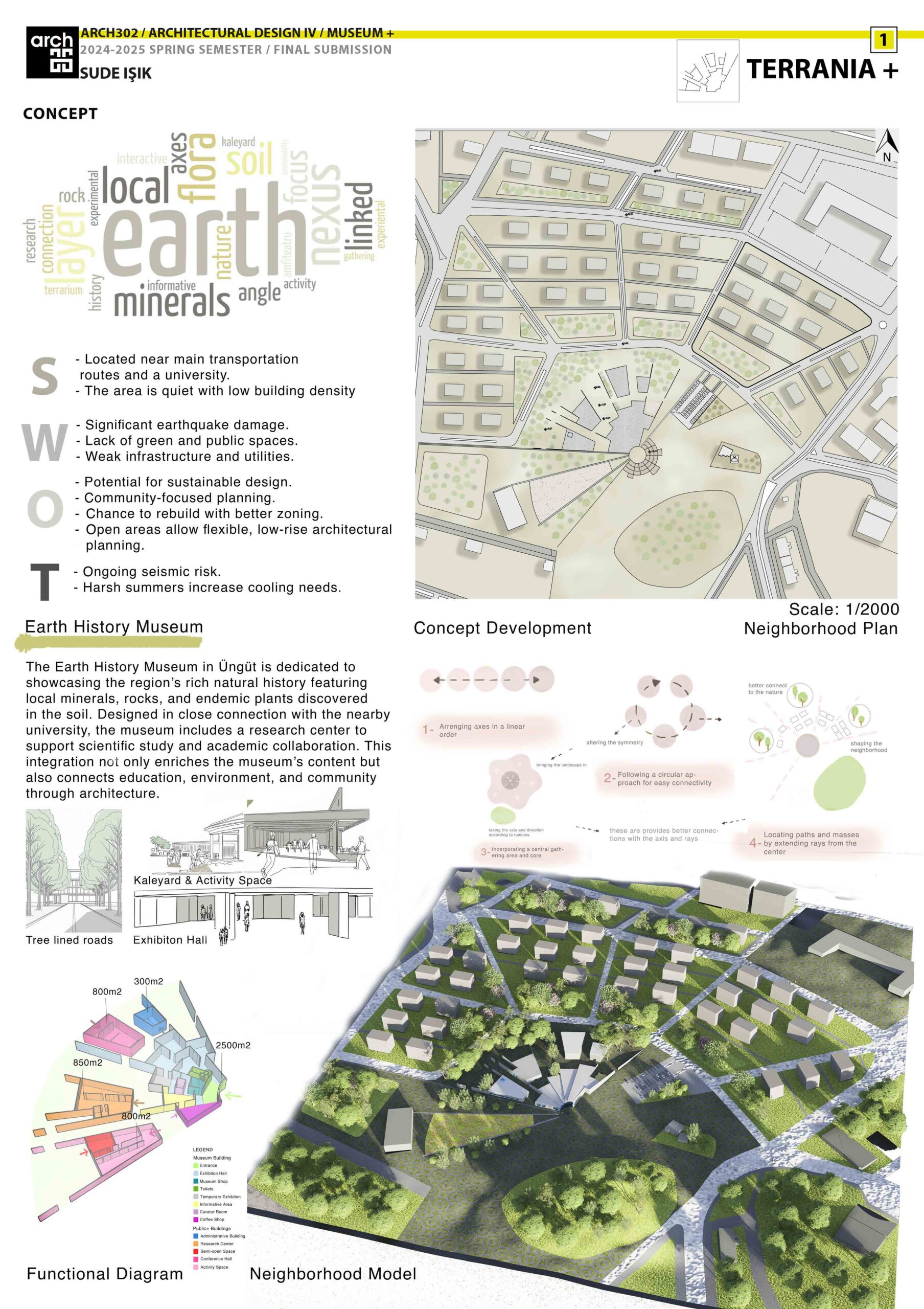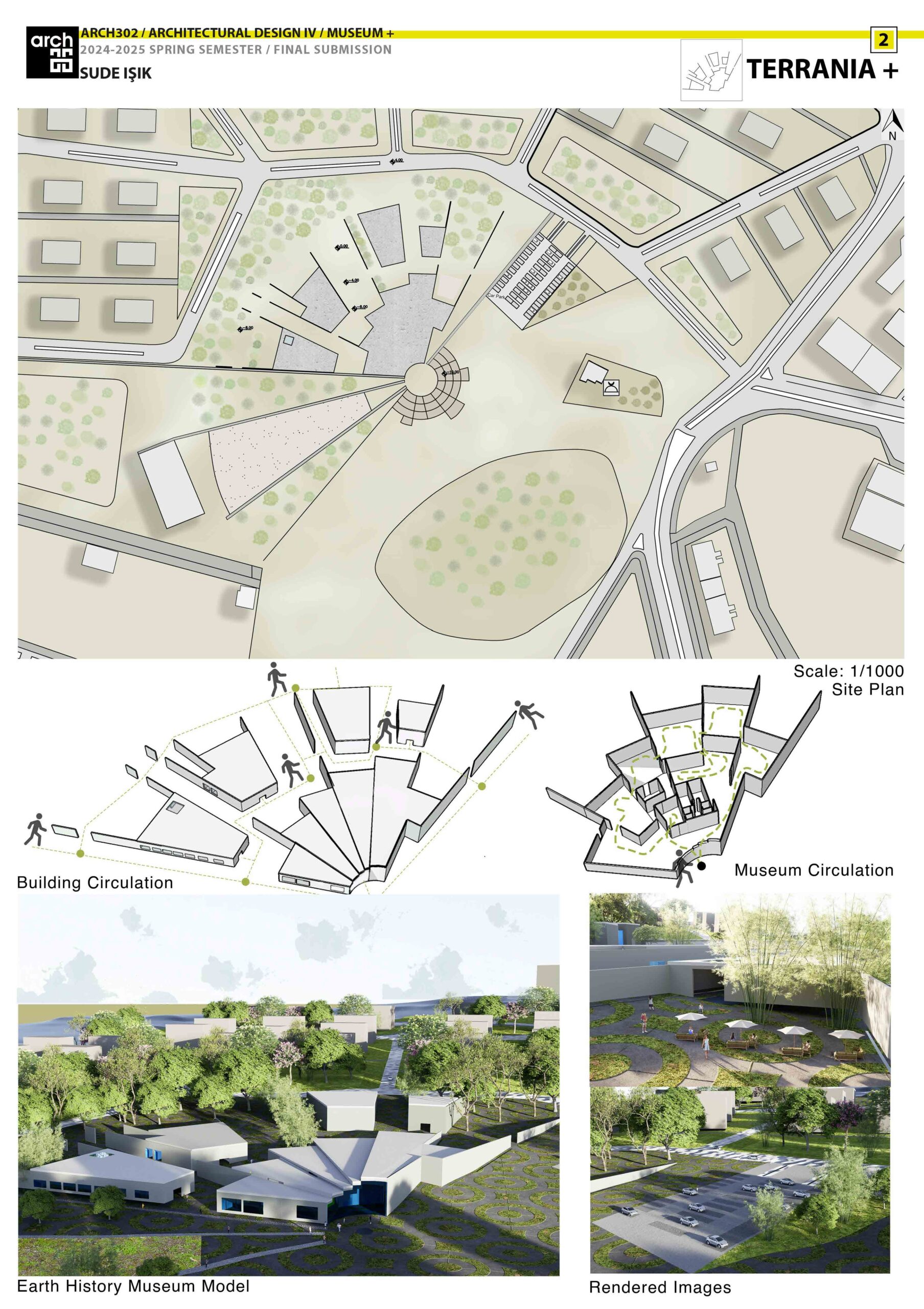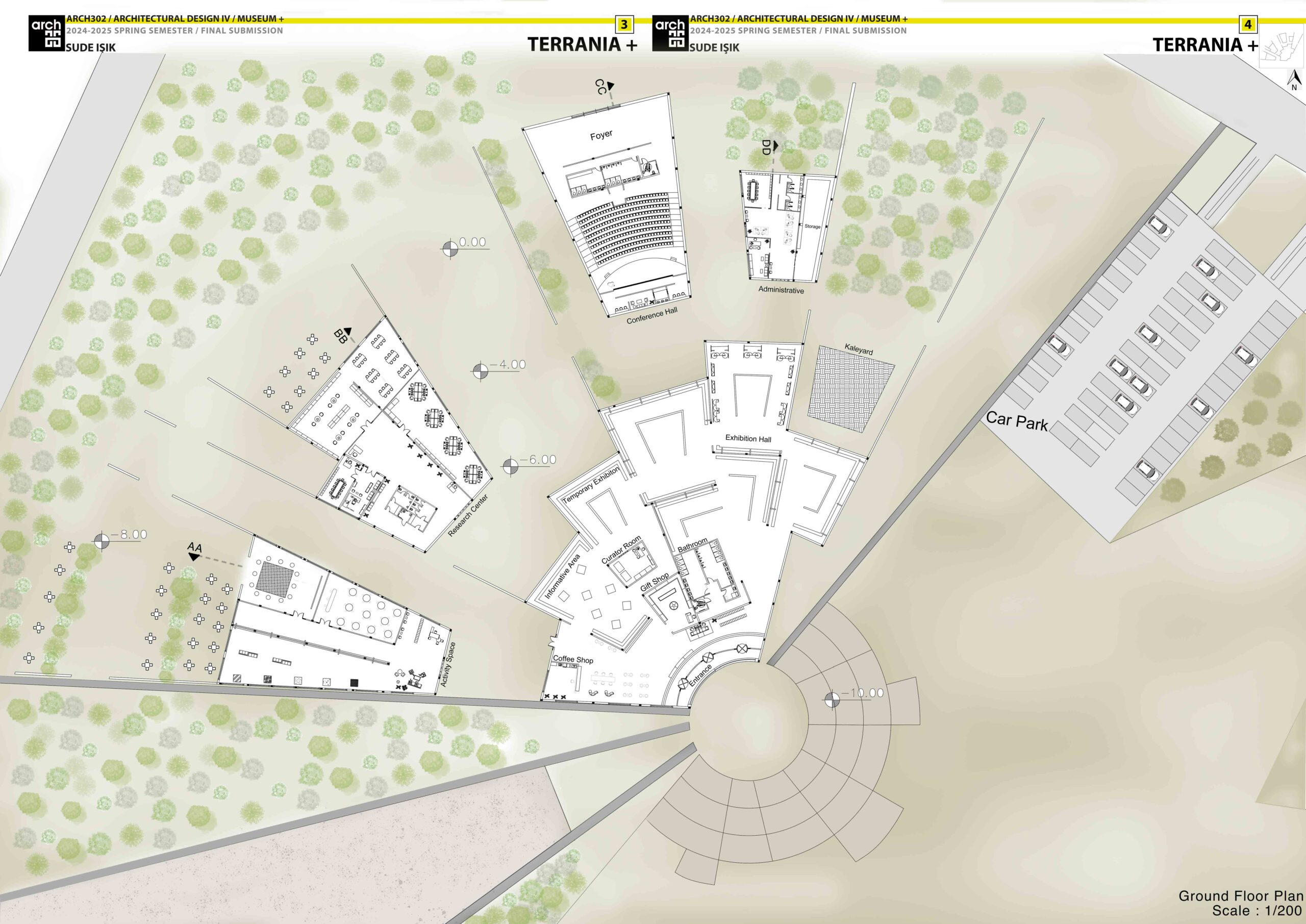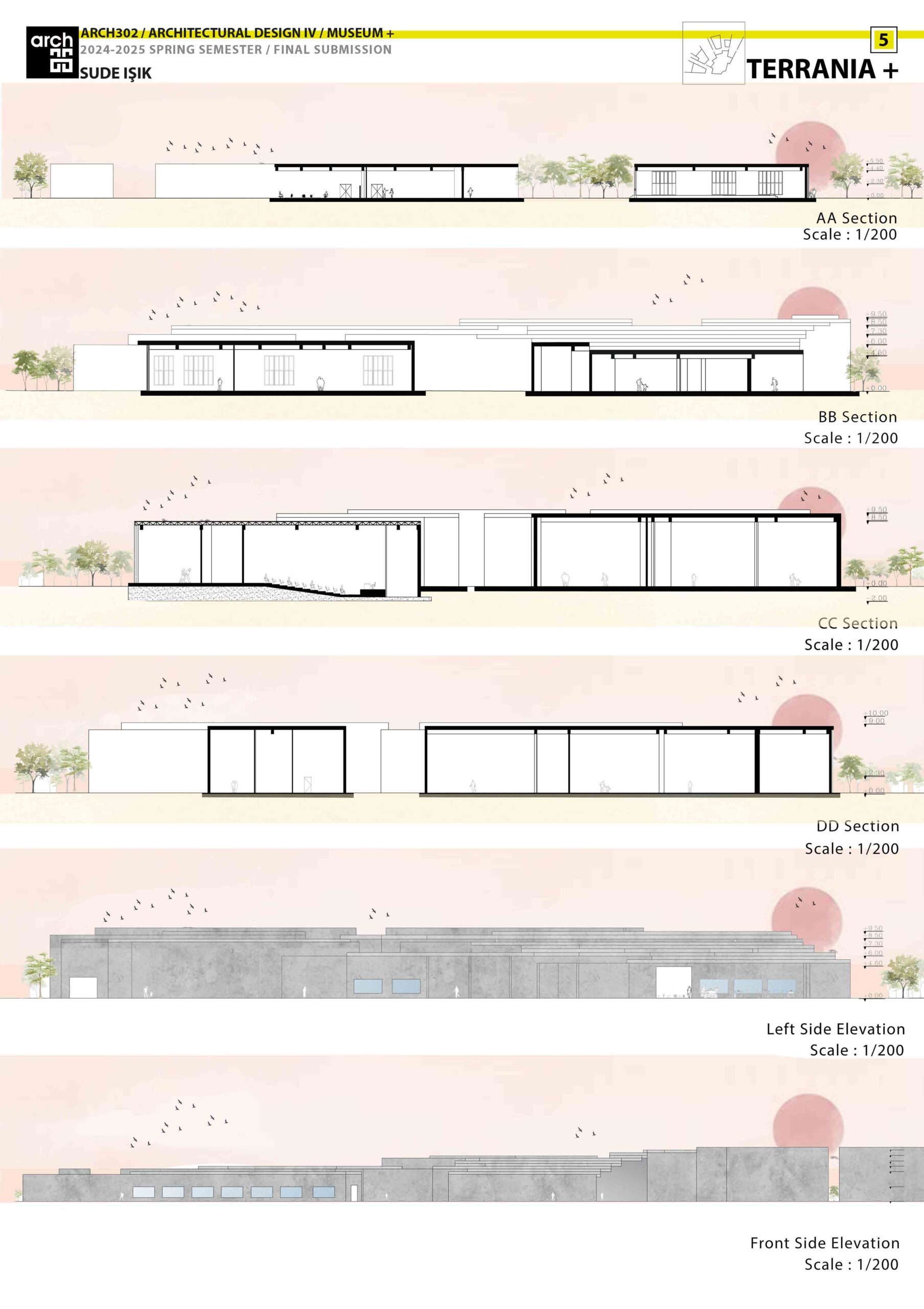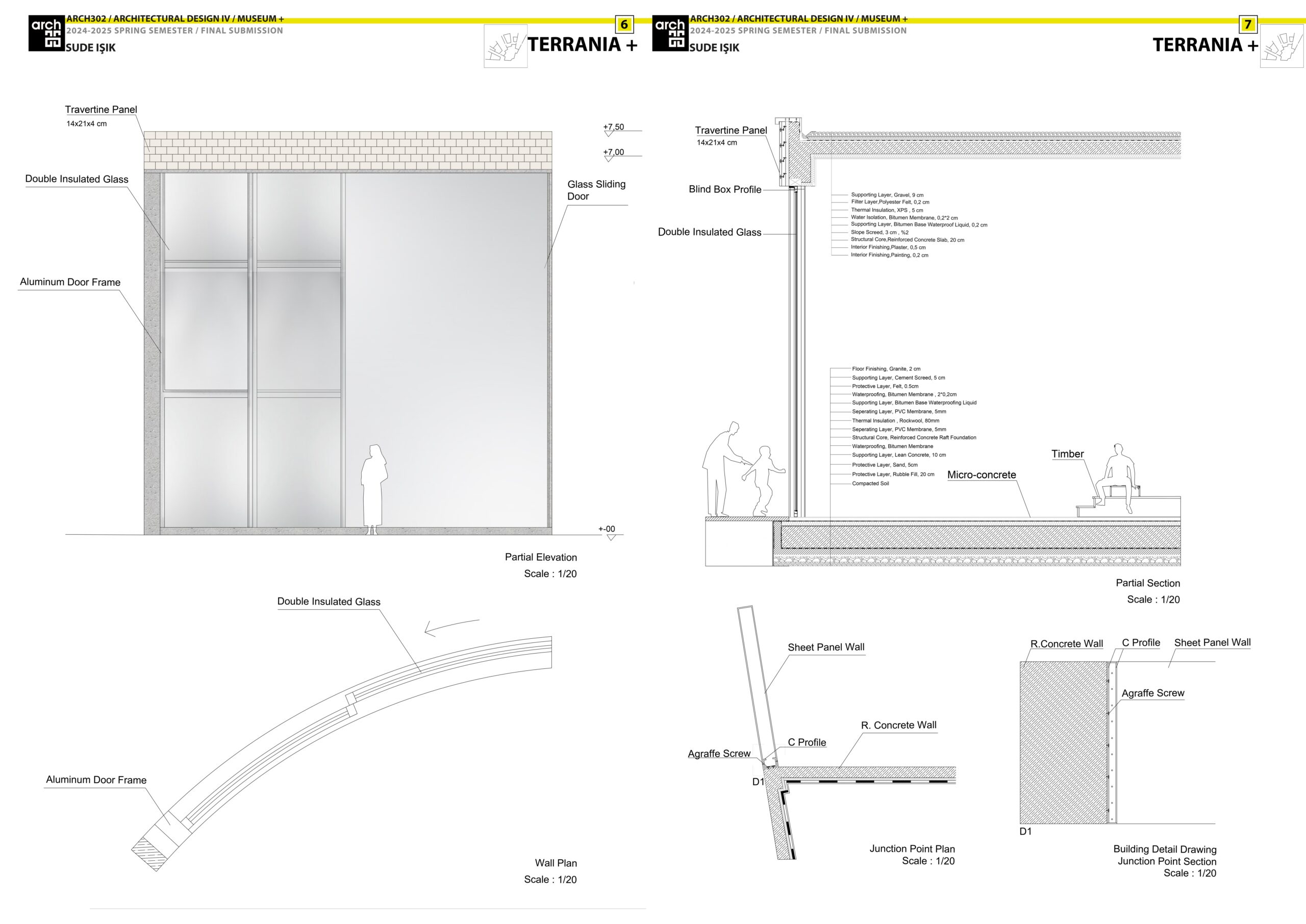TERRANIA + / Sude Işık
The Soil History Museum is a 5000 m² cultural complex composed of five distinct buildings, designed to explore and celebrate the geological and botanical richness of the region. The structure follows a unique spatial progression, with building heights increasing from 5 to 10 meters, creating a dynamic architectural experience in the third dimension.
At the heart of the complex lies the main museum building, which includes a permanent exhibition hall, a temporary exhibition space, a gift shop, and a cozy café for visitors. Surrounding this central structure are four supportive buildings: an administrative office, a research center, a conference hall, and an activity area.
The research center, closely connected to the nearby university, features a dedicated library and provides a platform for academic collaboration. The activity area offers interactive workshops, including a terrarium studio where visitors engage directly with natural materials like soil, rocks, and plants.
Rooted in the concept of soil as both origin and archive, the museum’s layout radiates from a symbolic center, forming linear axes that guide movement and connection. By focusing on minerals, plants, and rock formations, the museum not only showcases nature’s timeline but also creates a grounded, place-specific narrative. The Soil History Museum stands as a new cultural landmark that brings education, nature, and design into meaningful dialogue.